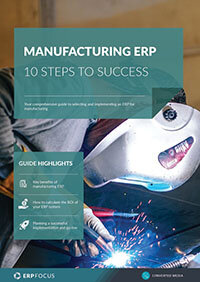ERP Kanban Systems for Suppliers
Here is a word that doesn’t often show up on an ERP web site. But it is in print now so what is it and why should I care? Let’s start with a definition from the Business Dictionary:
Materials requirement planning technique developed by Toyota Corporation (as a part of just-in-time inventory system) in which work-centers signal with a card when they wish to withdraw parts from feeding operations or the supply bins. Kanban means a visible record (such as a billboard, card, label, or sign) in Japanese.
Where does the ERP come in? Easy, kanban and just in time processing have become common and many ERP systems include a module or at least some framework for ERP kanban systems.
Many production processes are cost-based. They aim to drive the cost of operations to the lowest possible at that operation. That could lead to a situation where one operation will complete their work and push it along to the next operation whether they need it or are ready to work on it or not. You can imagine this factory with a big pile of partially finished material piled up.
The Answer to Your Questions
The alternate process is for operation #2 to ask for material from operation #1 when they are ready to work on it. In a complete kanban factory this carries all the way to shipping who asks final testing for finished material just as the customer is ready to take it. How do they ask for something? They could have a kanban card that is handed to the upstream operator. ERP Kanban can answer many manufacturing questions.
This concept can be extended outside of the business to include suppliers too. One that I developed had several squares painted on the floor in a certain position. We wanted each square to have an assembled chassis complete with power supplies and wiring harnesses parked inside the square. Each afternoon our supplier made deliveries and checked if any squares were empty. The next morning he would fill in the empty squares with chassis assemblies. If there was any night shift production, there might still be an empty square and he would return with his afternoon delivery to fill in those squares. We had a regular inflow of needed material with an upper limit to our inventory level. Those squares had enough units to satisfy any demand we might have except for extremely rare circumstances. Our supplier could match his production to our need easily with very clear communication. We did provide him with a blanket purchase order and an expected flow rate with upper and lower rate expectations.
If necessary, we could have sent electronic signals from our ERP to his via web services or EDI but this visual communication channel worked fine and was easy to set up and follow for all parties.
Free white paper

Manufacturing ERP: 10 steps to success
Complete step-by-step guide to manufacturing ERP software

Related articles
-

How to use ERP workflow to improve supply chain management
Learn how automated ERP workflows can improve order management, production scheduling and more su...
-

CMMC Compliance: What Aerospace and Defense Manufacturers Need to Know
Key insights on CMMC compliance, deadlines, and securing DoD contracts with CMMC 2.0 certificatio...
-

ERP & Logistics: Optimizing the Supply Chain
Read about the steps you can take to optimize your supply chain through ERP software logistics ma...

